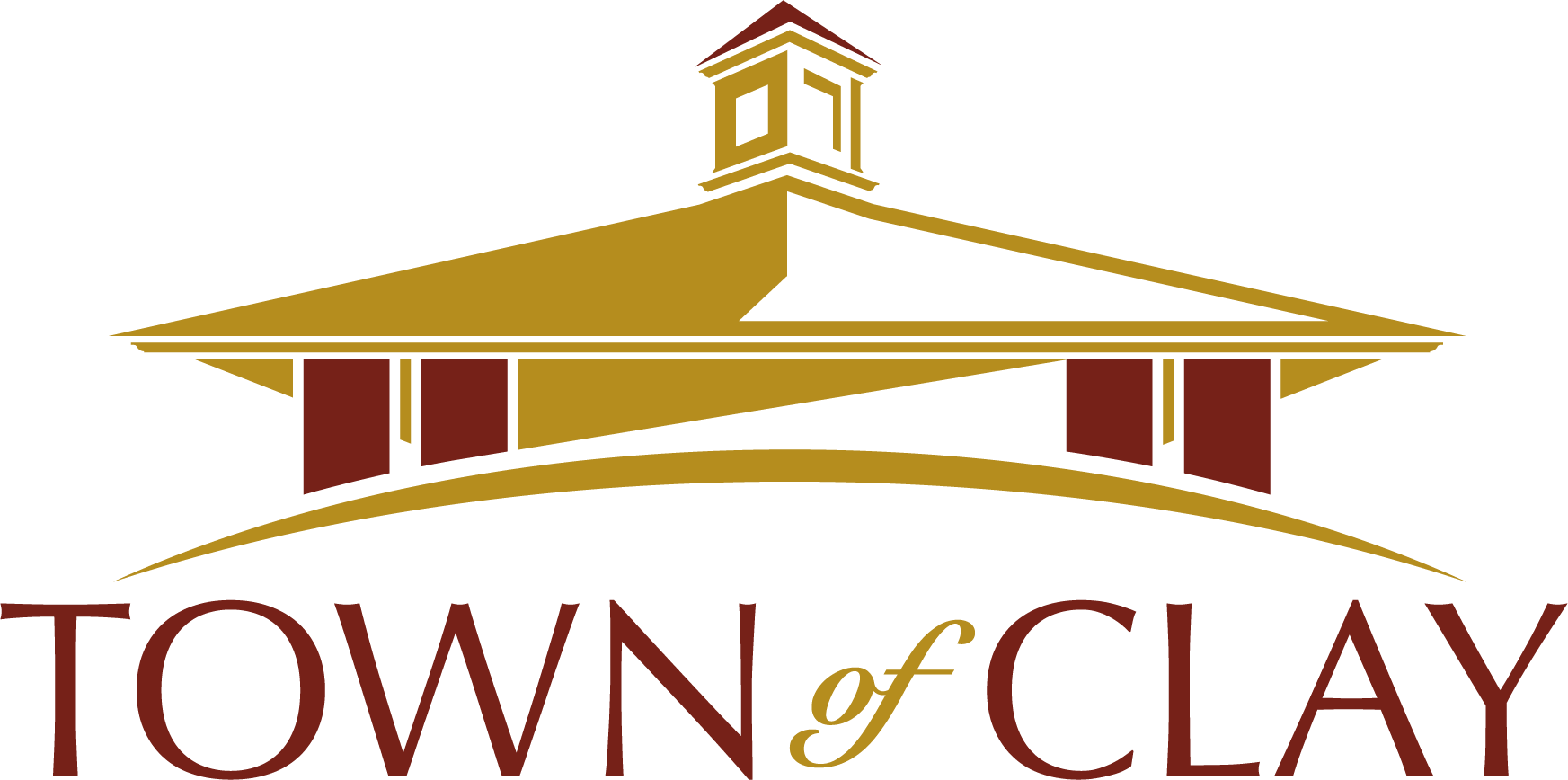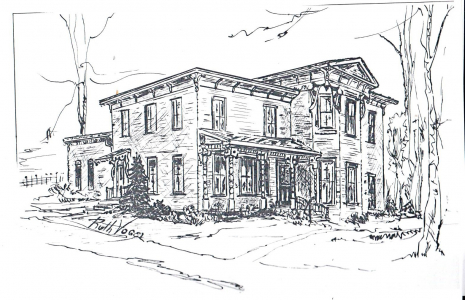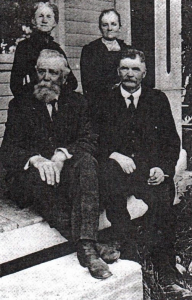Morgan School/Brown ChildrenPosted on September 11, 2020 |
Image
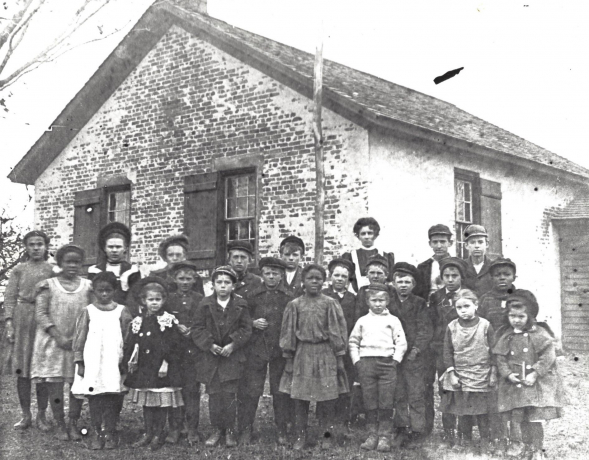
|
HISTORY MYSTERY: Morgan School/Brown Children
The photo is of Morgan Schoolhouse in Clay, c.1910. Of particular note is that this rural schoolhouse was not segregated (even though “Jim Crow” segregation laws were in full force in the South and parts of the North at this time)—African-American children attended alongside their White peers. The African-American children in the picture were all from the Brown family. Their names were Arthur, Estella, Flossie, and Rosetta. Their parents were Frank and Maria Brown. Frank was a local farmer who was born in Virginia. According to Liverpool in the Nineties (1957) by Joseph H. Schaefer, Brown was a former slave who worked as a servant to Captain William Weller, a white officer who served in the 3rd and 15th NY Cavalry Regiments during the Civil War. After the war, Brown accompanied Weller back to his hometown of Clay to work on his farm (which appears to have been located just north of the intersection of Henry and Vine St./ Taft Rd.). Brown’s story parallels that of other African-Americans who came to Clay with Union officers after the Civil War. Joseph Fugett accompanied Civil War surgeon (and former town supervisor) James V. Kendall back to Clay, where he learned the blacksmithing trade and went on to become a prosperous blacksmith and carriage maker in Baldwinsville. Littleton Lorton Page appears to have accompanied a Union officer named James Decker back to his farm in Clay, where he attended school, which led to a college education and a career as an influential teacher, principal and leader in the African-American community in Charles Town, WV.
Schaefer tells a story of how Frank became popular with local schoolchildren. While Frank worked for Captain Weller, he was required to delivery grist to Crawford Mills, mainly while the children were in school. One winter day he was barraged with snowballs (it’s not clear if this was motivated by prejudice or simply some kids being mischievous). He stopped his wagon and said to the school children, “Boys, why are you treating these horses like this? They are gentle and hard workers. Mr. Weller would feel awfully bad if he knew how you tried to hurt them. You are trying to make them run away from me, but they won’t do it when I talk nice to them. You know they teach you in school to be kind to animals and this is a good time to do it. Any time you want a ride, just hop on. I’m going up to the mill and after that, if anybody lives out my way, I’ll take you home”. Many hopped on and after that everybody was his friend.
One day, Frank pulled up in front of the school as teacher, Miss O’Neil, was dismissing the lower grades. As it would be 30 or 40 minutes until the upper grades were dismissed, Frank asked her how she would like to take the little kids for a sleigh ride. She said “surely” and went back inside the school house to bundle them all up and they all hopped on the bobs. With blankest and straw to keep warm, they had a “jolly” time riding around the old village of Liverpool. They returned just as the older students were leaving. The happiness had shown on their little faces and their thankfulness to the “nice man, Mr. Brown” so impressed the older ones. ‘The transformation was complete’. He won them all over!
Brown later worked as a farm laborer on local farms (including that of Edwin Dewey, who lived in the northeast corner of Wetzel & Rt. 57), and at a livery stable in Liverpool. Eventually he acquired and operated his own farm in Clay. The turkeys he raised were considered to be particularly tasty—this was said to be because he had beech trees on his property and the beech nuts the turkeys ate gave them a wonderful flavor. He married Maria, a Canadian immigrant of African descent, in 1893.
Arthur, the boy seen in the picture, worked as a farrier (horseshoer) for the Town of Clay around 1917. He served in the US Army from August 1918 to July 1919, during World War I, and was deployed to France.
The Brown family moved to the city of Syracuse around 1925. Frank died in the mid-1930’s, and his wife Maria moved to Rochester, near her son Arthur and daughter Estella, while Rosetta married a man named Philip Handy and remained in Syracuse. Maria died in Rochester in 1944.
The Morgan Schoolhouse itself has a storied history. It was a brick schoolhouse built in the 1850’s. It was named for the Morgan Settlement—the collection of farms centered around the Morgan Meeting house Church at the intersection of Wetzel and Morgan Roads. The structure was used as a schoolhouse as late as the 1940’s. The former school building, located at 8048 Morgan Road, is still standing and appears to be in excellent condition, currently in use as a private residence.
Dorothy Heller, Historian
Zachary Peelman, Research
September 11th, 2020
Other
History Mysteries
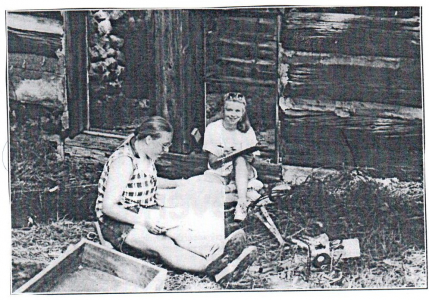
Clay Archaeological Digs
History Mystery | May 20, 2021
HISTORY MYSTERY: Clay Archaeological Digs
